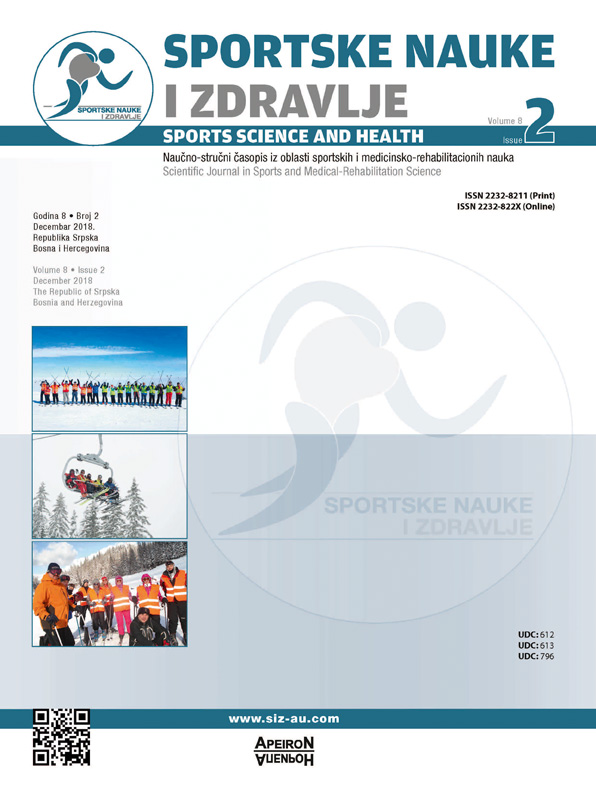The Relation Between Motor Skills and Performance of Gymnastic Elements on the Floor Routine and the Vault // Relacije motoričkih sposobnosti i uspjeha izvođenja gimnastičkih elemenata na parteru i preskoku
DOI:
https://doi.org/10.7251/SSH1802135JAbstract
The aim of this research was to establish a relationship between motor skills and performance of gymnastic elements on the floor routine and vault. A battery of 22 motor skills tests was assessed on the sample of 36 male subjects, students of Faculty of Physical Education and Sport, all of whom took the course “Sport Gymnastics 1”. The subjects were evaluated by an expert commission in the performance of the selected elements on the floor routine (side-to-side and front-to-back cartwheel, roundoff, front and back handspring, forward and backward flip) and the vault (squat through on the vault and straddle vault with pre-flight, front handspring on vault, roundoff vault). The overall results of the canonical correlation analysis indicated to the evaluation of the applied canonical model on motor tests in relation to the performance of gymnastic elements, to the canonical correlation value of 0.998 with the Chi-Square test value of 320.11, and to statistically significant correlation of used variables on level p .00280. Through further analysis, 10 canonical roots were extracted, out of which only the first one was statistically significant (p .002). Through observation of data on the correlation between motor variables and canonical roots, it can be concluded that the standing triple jump variable and the lying medicine ball throw variable have the highest projection on the canonical factor, and thus are also most significant in conditioning the results achieved. Variables of coordination, figure eight running drill with bending under rope, lateral shuffle, agility on the floor, and agility in the air, all indicate to negative projection on the first isolated canonical factor, as do the two flexibility tests, shoulder and chest opener with rod and standing shoulder extension, pointing to the fact that the subjects with lower degree of those motor skills have also had lower performance of specific gymnastic elements. Regarding the criterion variables, the results show that the front-to-back cartwheel variable had the biggest projection, while the variables side-to-side cartwheel, back handspring, backward flip, squat through on the vault with pre-flight, and roundoff vault had almost the same projection on the first canonical root, indicating the need for greater engagement of motor skills in performing the aforementioned elements.Downloads
Published
2019-01-10
Issue
Section
Чланци
